romanticisin' in the rain
a little rain never hurt anybody, especially when it comes to iconic movie scenes
I’m on my way home from work when a rain shower surprises me. As the first drops splash on the cemented road, they create a rhythm of soft patters before turning into a cacophony of nature. I scrunch up my nose and squint. Then I stop. Why would I hide from the rain when I have a warm shower and dry clothes waiting for me at home? Like the unclenching of a fist, I let the rain wash over me.
There’s something very romantic about rain. Though it’s less romantic when you have somewhere to be and wet jeans are the most uncomfortable thing in the world, rain has a lot of romantic potential. Potential that movies have employed shamelessly throughout the years. And what better time of year to analyse the use of rain in cinema than in the height of autumn?
⋆。°✩ spoilers ahead! ⋆。°✩
An iconic example is the final scene in Breakfast at Tiffany’s. Protagonist Holly Golightly (Audrey Hepburn) takes her last name very seriously; she goes about everything with lightness, pushing away the bad days and the intense emotions, saving them for a rainy day. They all catch up to her in the (emotional) climax of the film. Holly tries to run away again and cut all ties. When Paul (George Peppard) confesses he loves her, she ignores him and pushes her cat out of the cab. It’s extra sad because she leaves the poor cat to fend for himself in the pouring rain.
Paul leaves Holly behind in the cab after pushing an engagement ring into her hands. Her breath shudders as she puts it on, before running after Paul. Holly fervently looks for Cat in the hopes of finding him where she left him behind. The rain is loud as it strikes the ground and makes it hard to see, making the process more urgent. When she finds Cat, the rain doesn’t matter anymore. Her tears mix with the rain and the lovers (and Cat) reunite. It is true: Love conquers all (even rain).
A similar moment happens in The Notebook. Just as they come in from a romantic boat trip, it starts to storm. The rain falls down without warning, and they are too late to seek shelter. When they finally get to shore, they are soaked and rushing to get out of the water. Then Allie (Rachel McAdams) turns, yelling over the rain to be heard, asking the burning question: ‘Why didn’t you write me?’ The rain causes an outburst of passion and creates urgency in their desires: Noah (Ryan Gosling) answers her in disbelief, telling her that he wrote her 365 letters. Then the kiss that won the 2005 MTV award for Best Kiss ensues. The rain doesn’t bother them any longer. They’re in love, so why care about trivial things like the rain beating down on them?
Rain equals romance; it triggers an outburst of passion.
It is like Kristi McKim notes in her book Cinema as Weather: “Very simply, rain makes characters do something, whether finding and opening an umbrella, seeking shelter, or passionately refusing shelter. In many examples, rain manifests otherwise latent desire; the sound and image of rain accelerate the pacing and intensify the sensation of the scene.”1
In this scene in Pride & Prejudice, Darcy (Matthew Macfayden) surprises Elizabeth (Keira Knightly) by coming out after her in the rain. Darcy proposes to her as they hide away in a gazebo. This rainy scene could be concluded with a passionate kiss. This doesn’t happen, which makes it an even more powerful scene: Elizabeth holds onto her pride and does not accept his half-baked proposal that started with insulting her family. It takes a lot more growth on either side before the two lovers come together (in a dreamy, mist-filled landscape at sunrise). Still, the pattering rain forms an intensifying melody in the background of the bickering lovers and the desire that is clear in their eyes.
A similar confession of love happens in the penultimate scene of Little Women (2019). Jo (Saoirse Ronan) rushes to the train station to catch her love interest Baer (Louis Garrel) before he leaves. She runs through the rain, looking for him, and takes shelter underneath his umbrella when she finds him in time. An iconic scene, adapted from the chapter ‘Under the Umbrella’ in the book by L. M. Alcott.
Here, director Greta Gerwig might be playing with the rain, utilizing its typical romantic connotation to suggest something else... By creating an overly romantic situation that is too good to be true (sappy, even, unlike the rest of the film) it might give the sense that it is… made up? Alternating and intercutting this scene with moments where Jo tries to sell her book creates even further ambiguity: Did this scene really happen? Or did it only occur because, as her publisher tells Jo at the beginning of the movie, women should either be dead or married at the end of the story in order for it to sell? (More on this in an upcoming post!)
Rain and romance go hand in hand. How different would all of these scenes be if the sun had been shining? Rain in cinema is intentional. It’s romantic. And it creates very iconic scenes. Next time a rain shower surprises me, I’ll search for the camera’s.
thanks for reading! ⋆。°✩
McKim, K. (2013). Cinema as Weather: Stylistic Screens and Atmospheric Change (1st ed.). Routledge. https://doi.org/10.4324/9780203583906





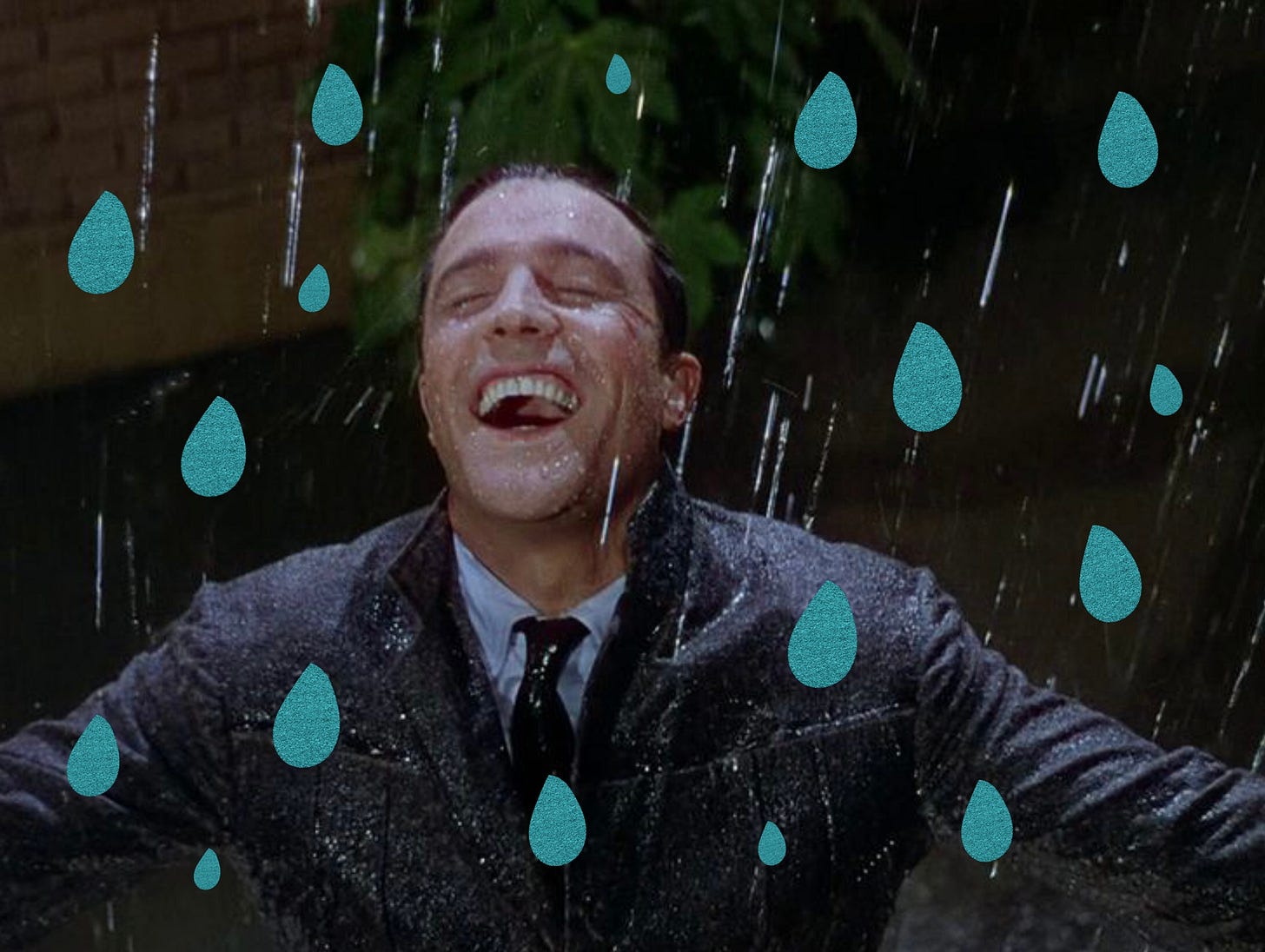
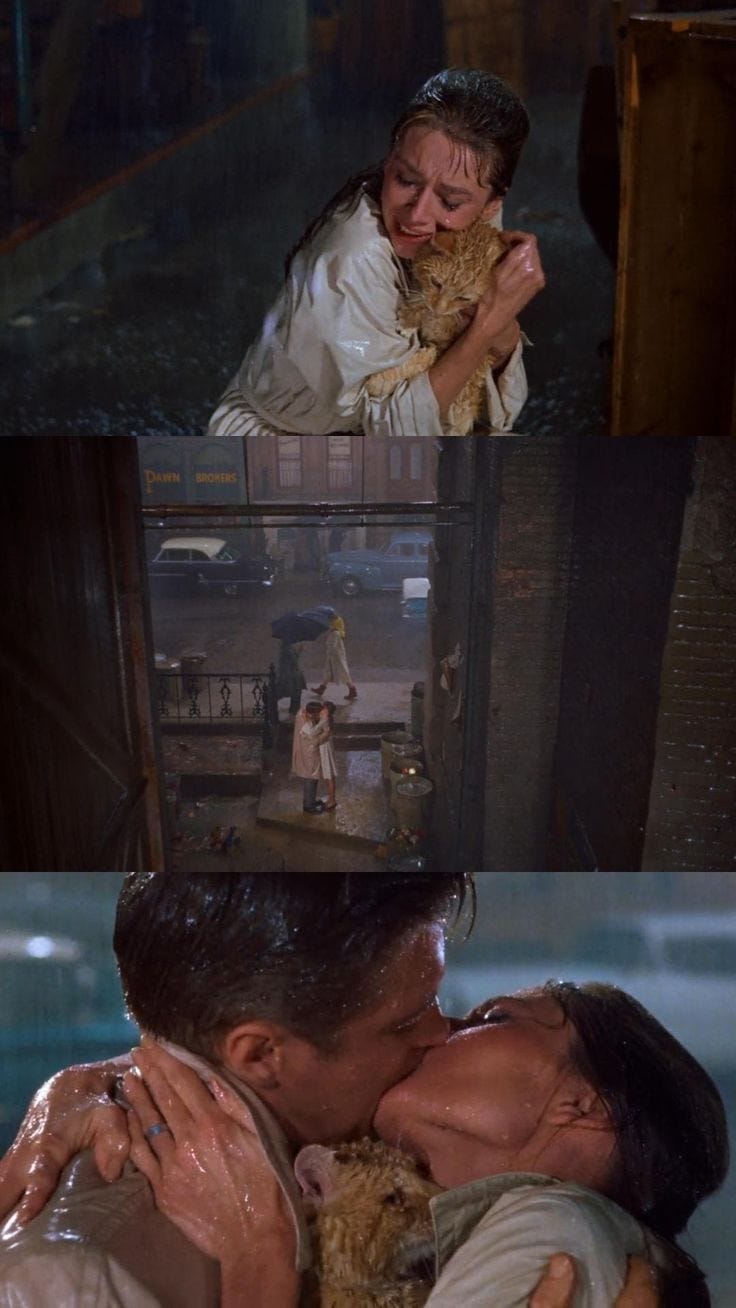
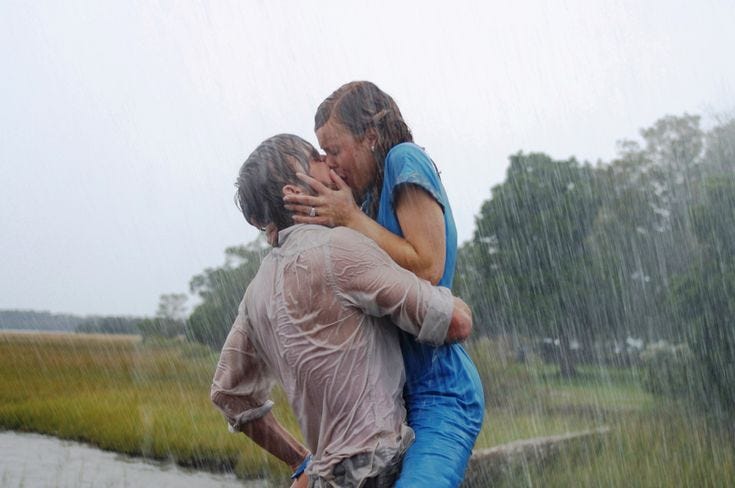
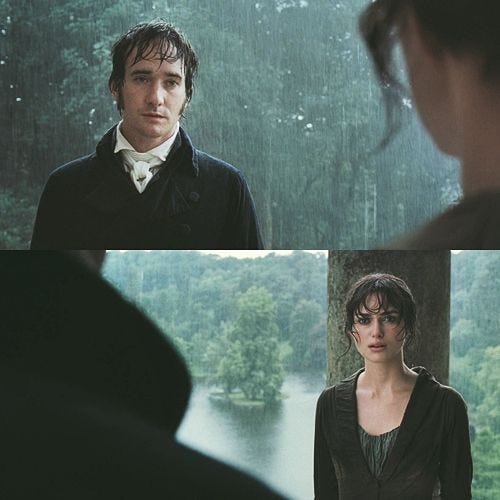
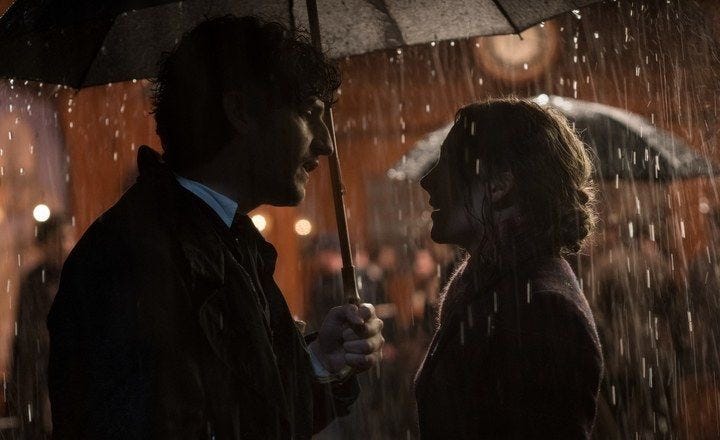

My favourite rain scene is from Midnight in Paris. It’s one of my favourite movies as a writer. But the whole idea of not caring about the rain because you’re surrounded by love and beauty is just so beautiful ♥️ After watching the movie I’ve learnt to love the rain 🦢
So enjoyed reading this! 😊 And all these movies are fabulous 😍